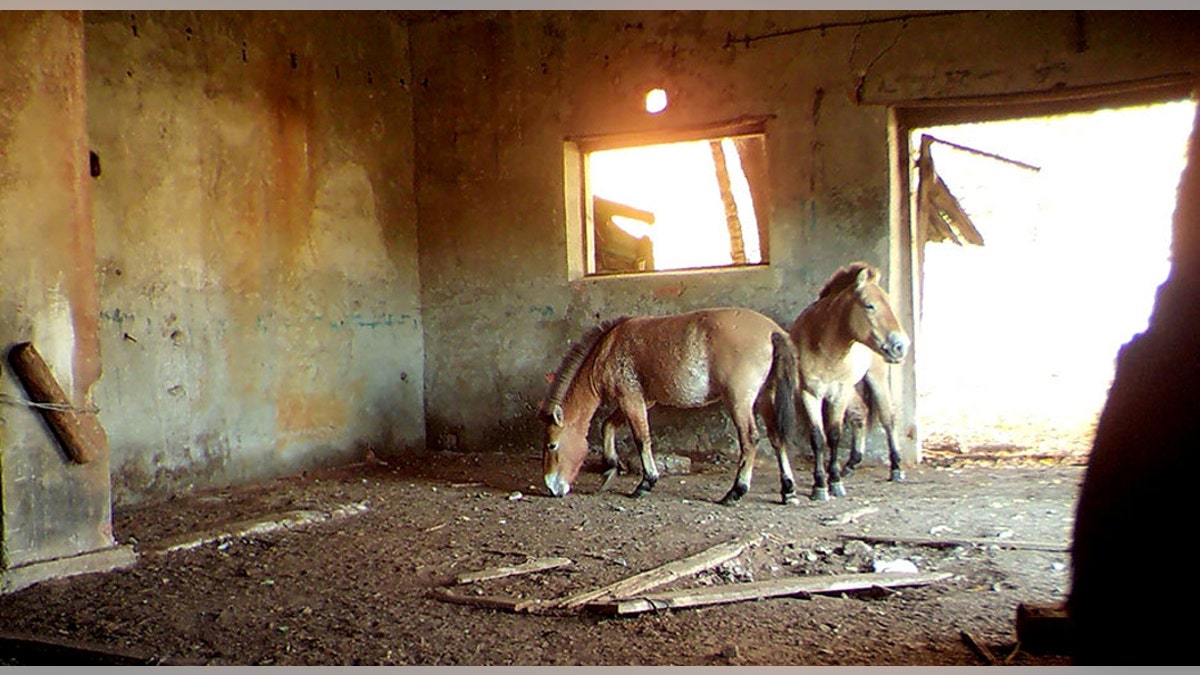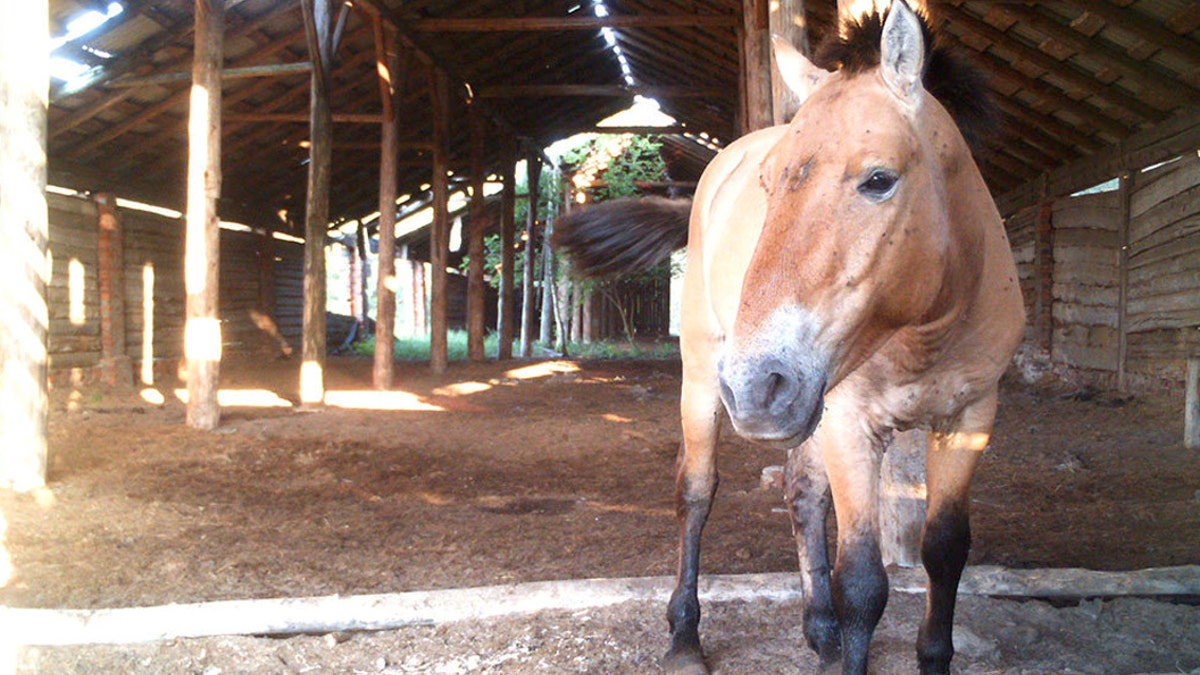Fox News Flash top headlines for Oct. 30
Fox News Flash top headlines for Oct. 30 are here. Check out what's clicking on Foxnews.com
Researchers have made a shocking discovery in the abandoned Chernobyl Exclusion Zone — it's now home to endangered wild horses.
Scientists at the University of Georgia were able to capture the rare Przewalski's horse on film at abandoned barns. Motion-sensor cameras took more than 11,000 images of the endangered mammal during the course of a year.
“Our results indicate Przewalski’s horses routinely use abandoned structures in the CEZ,” said one of the study's authors, James Beasley, in a statement. “As a result, these structures can serve as important focal points for research and management to obtain key demographic information such as age, sex ratio, population size and genetic structure.”

Researchers at the University of Georgia have found a strange inhabitant of the Chernobyl Exclusion Zone in Ukraine - rare Przewalski's horses which use the abandoned structures for cover for hours on end. (Credit: SWNS)
CHERNOBYL'S 'SARCOPHAGUS' BEING DISMANTLED DUE TO 'VERY HIGH' PROBABILITY OF COLLAPSE
Fifteen years ago, 36 Przewalski’s horses (named after Polish-born explorer Nikołaj Przewalski, who first discovered them) were introduced to the border of Belarus and Ukraine to increase the biodiversity in the CEZ. By 2008, the number of horses nearly doubled, surprising experts, although the figures are still considered too low to sustain a population.
“When the size of a population is reduced, it has lost a lot of natural variation,” said the lead investigator, Peter Schlichting, in the statement. “The goal of conservation programs is to maintain as much diversity as possible and prevent inbreeding, ensuring a population can withstand changes in the environment and survive long term.”
The last surviving subspecies of wild horse, according to National Geographic, Przewalski's horse has been classified as Critically Endangered by the International Union for Conservation of Nature.
![Rare horses have made their home in the Chernobyl Exclusion Zone that was abandoned after the 1986 nuclear accident, researchers have found. Over 11,000 pictures of rare Przewalski's horses were taken showing the equine species using barns as shelters in the Exclusion Zone [CEZ] in Belarus. (Credit: SWNS)](https://a57.foxnews.com/static.foxnews.com/foxnews.com/content/uploads/2019/10/1200/675/chernobyl-horse-2.jpg?ve=1&tl=1)
Rare horses have made their home in the Chernobyl Exclusion Zone that was abandoned after the 1986 nuclear accident, researchers have found. Over 11,000 pictures of rare Przewalski's horses were taken showing the equine species using barns as shelters in the Exclusion Zone [CEZ] in Belarus. (Credit: SWNS)
The horses were seen 35 times at nine of the 10 monitored structures during the winter months, as they took shelter, slept and bred. They were also spotted 149 times at all eight monitored structures during the summer, taking cover from insects.
Researchers also discovered a number of other species in the CEZ during the summer, including brown hare, red deer, moose, wild boar, red fox and raccoon dogs. Also spotted were Eurasian lynx, wolves and several avian and bat species.
A 2018 study expressed concern that gray wolves from the radioactive CEZ were starting to venture out into other areas and could cause genetic mutations if they bred with other gray wolves.
CHERNOBYL'S RADIOACTIVE 'WILDLIFE PRESERVE' SPAWNS GROWING WOLF POPULATION

A research team at the University of Georgia set up cameras to record the horses loafing, sleeping, and breeding during the winters and summers. They also suspect the horses, native to the steppes of Central Asia, use the structures as refuge from insects during summer months. (Credit: SWNS)
Schlichting said that future studies are needed to understand the rare horse better, including the exact number and certain behavioral patterns in an effort to preserve and aid the species' growth.
“Video footage could be a useful tool to track individuals during visits and be used in conjunction with cameras to fill in those gaps,” Schlichting noted.
The study has been published in the journal Mammal Research.

